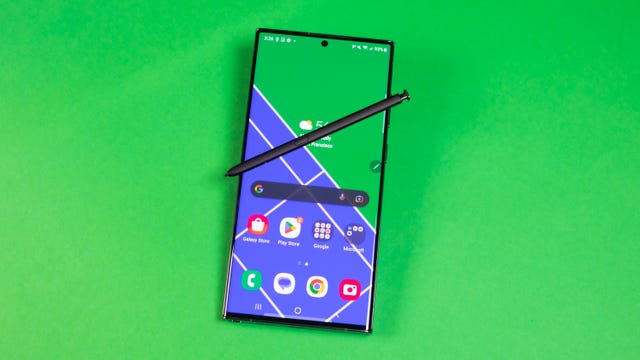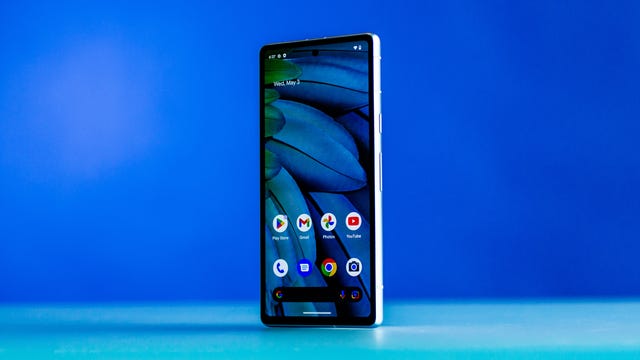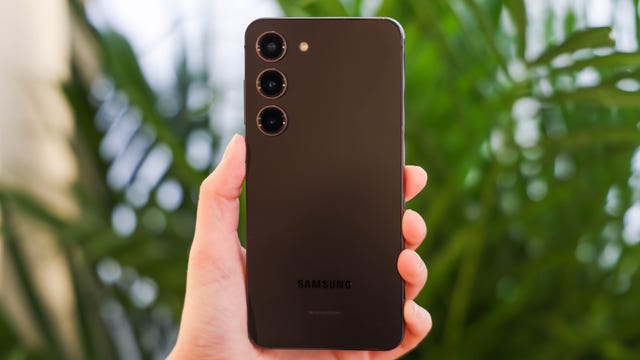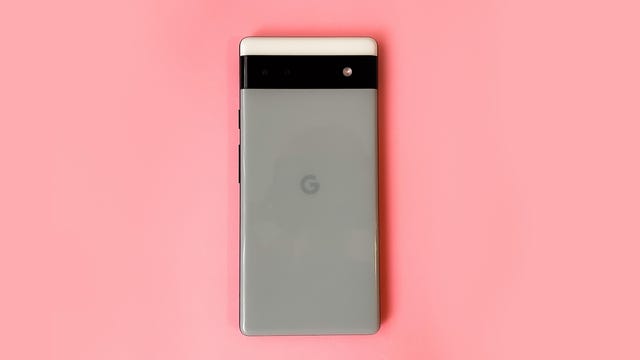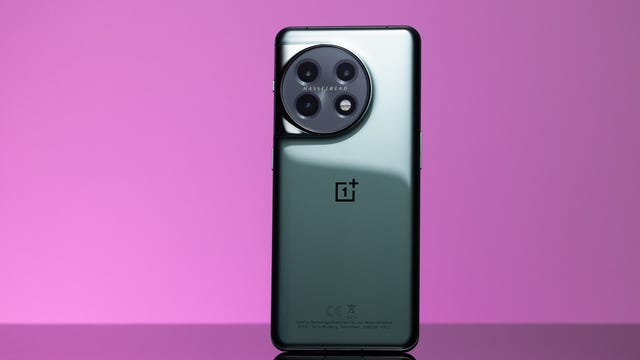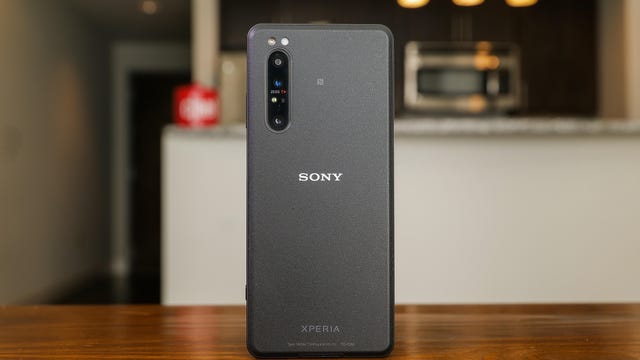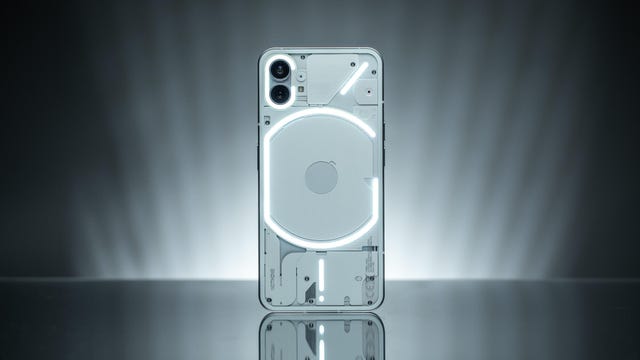Technologies
Best Android Phone of 2023
The Galaxy S23, Pixel 7 Pro and others made our list.
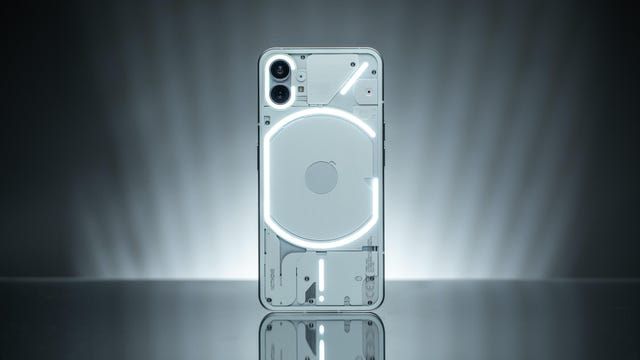
There’s certainly no shortage of choice when it comes to Android phones, whether you prefer Samsung, Google or OnePlus. Android devices come in a wide variety of sizes, shapes and prices, meaning there’s something for everyone. But having so many options also means the buying decision can be difficult. If you aren’t sure where to start, you’re in the right place: We’ve tested and researched all the best Android phones you can buy in 2023.
A great phone should have high-quality cameras, long battery life, compelling software features and 5G support. We considered these factors when putting together our list of the best Android phones in 2023, which you can check out below. CNET’s team updates this list periodically as we review new products.
What is the best Android phone?
The Google Pixel 7 Pro sits at the top of our list of best Android phones, largely because it has some of the best cameras found on any phone sold today and represents one of the best values for your dollar on this list. The Pixel 7 Pro also packs a number of convenient features that are unique to it. There are calling tools like the ability to wait on hold and notify you when a representative becomes available. You can also sharpen old photos that are out of focus to make the subject look clearer. And then there’s the ability to automatically caption videos, podcasts, phone calls and more.
Advertiser Disclosure
There are plenty of other excellent choices out there, however, even though the Pixel 7 Pro is our current favorite.
Best Android phones of 2023
Like:
• Refreshed design looks great
• Superb cameras
• Clean and enjoyable interface
Don’t like:
• Battery life could be better
Google’s latest flagship phone, the Pixel 7 Pro, isn’t a huge overhaul from the already excellent Pixel 6 Pro Google launched last year. But it’s taken that winning formula and made some key tweaks to almost every element, resulting in a superb phone that’s bliss to use. The refreshed camera can take stunning images too, earning its spot among the best flagship phones around. It typically sells for $899, but Google currently has it on sale for $150 off.
Like:
- Fast performance
- Excellent main camera
- Bright screen
- Included stylus
- Double the storage in the base model
- Four generations of Android OS updates
Don’t like:
- High price
- Photos don’t always look natural
- No improvements to fast charging
The Galaxy S23 is a lot, but in a good way. It’s more than most people need in a phone, but that doesn’t make it any less impressive. Samsung made improvements to the camera’s resolution (200 megapixels compared with 108 megapixels), color tones and dynamic range, while retaining the same edgy design and massive 6.8-inch screen as its predecessor. There’s also a new Qualcomm Snapdragon 8 Gen 2 processor that’s been optimized specifically for Samsung’s phones, which brings faster performance compared with the Galaxy S22 Ultra.
It may be an understatement to call this phone expensive: It starts at $1,200. But people willing to pay more for a giant screen and a high-quality, versatile camera won’t be disappointed. Read our Samsung Galaxy S23 Ultra review.
Like:
- Excellent camera
- Many of the same features as the Pixel 7 at a cheaper price
- Attractive design
- Gains wireless charging, face unlock and high refresh rate
Don’t like:
- Screen still looks dim outdoors
- Higher price compared with Pixel 6A at launch
- Only three generations of Android OS updates compared with Samsung’s four-generation pledge
Google’s budget phone took a leap forward in 2023 with the Pixel 7A, which offers many of the same benefits as the Pixel 7 but at a cheaper price. Like the Pixel 7, the Pixel 7A runs on Google’s Tensor G2 processor, meaning it has many of the same photo editing and language translation features as its pricier sibling. The Pixel 7A’s 64-megapixel camera also takes excellent photos that rival the Pixel 7’s in quality.
While we still like the Pixel 7, the Pixel 7A’s lower price makes it a better deal for most people. Only opt for the Pixel 7 if you really want a slightly larger screen and are willing to pay the extra $100 for it. Otherwise, the main differences between the Pixel 7 and 7A come down to the former’s more durable build, slightly faster charging and its ability to wirelessly charge compatible accessories. The Pixel 7 also has a larger camera sensor that’s more sensitive to light, according to Google, but CNET’s Lisa Eadicicco didn’t notice much of a difference.
Like:
- Longer battery life
- Attractive design
- Four generations of Android OS updates
- Fast performance
Don’t like:
- Cameras are basically the same as last year
- Expensive
- No improvements to fast charging
- No upgrade to base storage
Android fans looking for a petite phone don’t have much to choose from. But the 6.1-inch Galaxy S23 provides a compelling option for those who want a phone that feels compact but still provides enough screen space. The Galaxy S23 comes with routine upgrades like a fresh processor (a version of Qualcomm’s Snapdragon 8 Gen 2 that’s been optimized for Samsung’s phones), a slightly new design and a higher-resolution selfie camera. But it’s the Galaxy S23’s larger battery that makes it worth recommending. Read our Samsung Galaxy S23 review.
Like:
- Nice screen
- Speedy performance
- IP67 water-resistant
- Affordable price
Don’t like:
- No wireless charging
The Pixel 6A is a solid choice if you want 5G and a great camera on the cheap, especially at its new $349 price. This Pixel phone has the same Tensor chip that powers the Pixel 6, great rear cameras with many of Google’s shooting and editing tools, a 6.1-inch display and average battery life. At this price, it’s the best value you can get from an Android phone right now.
Like:
- Incredible performance for gaming
- Slick, refreshed design
- Hyper-fast charging
- Five years of security support
Don’t like:
- Cameras are good but not great
- Better waterproofing on rivals
The $700 OnePlus 11 is a powerful phone that’s well equipped to handle gaming, video streaming and other common tasks. In typical OnePlus fashion, this phone is also cheaper than the $800 Galaxy S23 and $900 Pixel 7 Pro. The cameras aren’t the best, but they’re fine for casual photographers who just want to capture their next vacation or a night out. What sets the OnePlus 11 apart from many of its rivals is its blazing 100-watt fast charging, which can replenish the battery in just 25 minutes. (The US version only supports 80-watt charging, but that’s still an improvement over the Galaxy S23 Ultra’s 45-watt charging). Overall, the OnePlus 11 is ideal for people who want a powerful phone that charges quickly and won’t break the bank. Read our full review of the OnePlus 11.
Like:
- 120Hz cover screen
- Water resistance
- Enhanced tablet experience
- Software improvements for multitasking and Flex Mode
Don’t like:
- $1,800 is still expensive
Foldable phones haven’t really hit the mainstream, remaining instead only in the reach of those willing to spend top dollar on the latest in mobile innovation. Samsung’s Galaxy Z Fold 4 is the best folding phone around, offering top-notch performance, a great camera setup and a variety of tweaks to its folding technology that make this Android smartphone more desirable than its predecessor. Just keep in mind that Google will be launching the Pixel Fold shortly, and Samsung typically releases new foldable phones around the August timeframe.
Like:
- Fun, foldable design
- High refresh-rate screen looks good
- Main camera takes good photos in medium and low light
Don’t like:
- Cover screen needs more functionality
- Battery barely gets through a day
- Ultrawide and selfie cameras are just average
- Price is high
Samsung’s $1,000 Galaxy Z Flip 4 is the most portable and fun phone CNET’s Patrick Holland reviewed last year. It inherits the best parts of the Z Flip 3, like its pocketable flip phone-inspired design and Flex Mode, which makes it easier to use the phone when it’s propped open halfway. The Z Flip 4 also has a new image sensor, which improves image quality compared to the Flip 3, along with a bigger battery and newer processor.
These improvements address some of the Z Flip 3’s biggest shortcomings, even though Samsung didn’t give us everything we wanted (like a larger cover screen). But all told, the Galaxy Z Flip 4 is a great choice for those who want a phone that’s more portable than almost anything else you’ll find on the market.
Samsung also lowered Z Flip 3’s price when introducing the Z Flip 4 last year. For that reason, we previously recommended the Z Flip 3 over the Z Flip 4 since they share many similarities. But now that the Z Flip 3 is almost two years old, it’s a wise idea to invest in newer technology that will last longer if possible. That’s especially true if you can score a good trade-in deal on the Z Flip 4.
Like:
- Professional level video monitor features
- Robust utilitarian build
- Live broadcast streaming over 5G
- As a phone, it’s essentially the Sony Xperia 1 II
Don’t like:
- Price is high, limiting its narrow appeal
- 2020 specs and Android 10
- Can’t record video via HDMI input
At a whopping $1,800 list price, the Sony Xperia Pro isn’t for everyone. But if you’re a photographer or videographer looking for professional-level camera phone features, you can’t go wrong. The Xperia Pro is essentially four products in one: a phone, a camera monitor, a speedy photo file transfer device and a 5G machine suitable for broadcasting and livestreaming.
Like:
• Flashing design
• Solid performance
• Affordable price
Don’t like:
• Cameras are only OK
• Not widely available in the US
The Nothing Phone 1’s affordable price, solid performance and good-enough camera setup already make it a solid option to consider if you’re looking for an Android phone on a budget. But this phone takes the pizzazz up a notch with its suite of flashing LED lights on the rear, which certainly make it stand out against its competitors.
It’s a great phone, which we enjoyed reviewing, but there is a downside: As of right now, there aren’t any plans to launch the phone widely in the US. You can get it unlocked on Amazon, but it’s GSM-only so it won’t work on Verizon. The company’s next phone, the Nothing Phone 2, will be coming to the US later this year.
How we test phones
Every phone on this list has been thoroughly tested by CNET’s expert reviews team. We actually use the phone, test the features, play games and take photos. We assess any marketing promises that a company makes about its phones. And if we find something we don’t like, be it battery life or build quality, we tell you all about it.
We examine every aspect of a phone during testing:
- Display
- Design and feel
- Processor performance
- Battery life
- Camera quality
- Features
We test all of a phone’s cameras (both front and back) in a variety of conditions: from outdoors under sunlight to dimmer indoor locales and night time scenes (for any available night modes). We also compare our findings against similarly priced models. We have a series of real-world battery tests to see how long a phone lasts under everyday use.
We take into account additional phone features like 5G, fingerprint and face readers, styluses, fast charging, foldable displays and other useful extras. And we weigh all of our experiences and testing against the price so you know whether a phone represents good value or not.
Read more: How We Test Phones
Phone FAQs
How reliable is an Android phone?
Android phones come in all shapes and sizes. Prices range from just a couple hundred dollars for a basic smartphone to $1,800 for state-of-the-art foldable phones. All the phones on this list are durable, have an IP rating for water and dust resistance and years of software support.
How long does an Android phone last?
While every phone on this list varies in how many years of software support you get and how long you can extend the warranty, most should last you a few years if not more.
More phone and Android recommendations
Technologies
Razer’s Wolverine V3 Pro 8K Controller Won’t Replace My Mouse and Keyboard, but Here’s Where It Shines
I applaud the absurdly high polling rate, six extra remappable buttons and TMR sticks, but let me tell you why I’m sticking with my keyboard and mouse for most games I play.
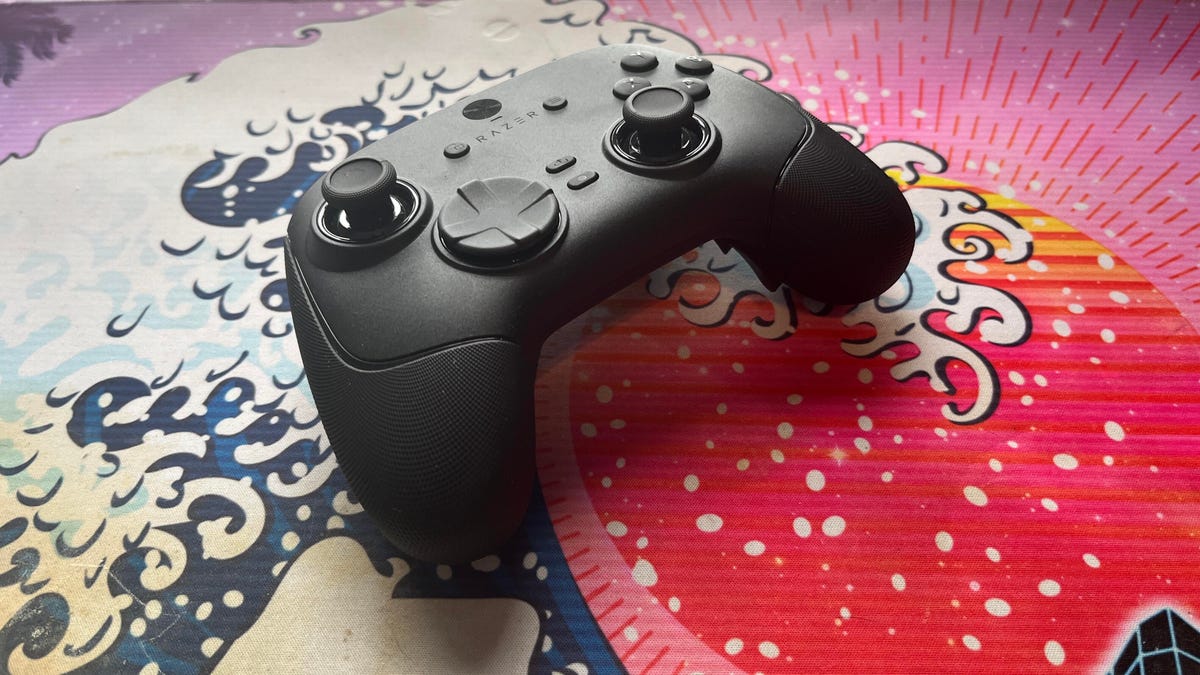
The Razer Wolverine V3 Pro 8K PC controller was not built for me, but admittedly, this has more to do with me as a gamer than the controller itself. I grew up playing the PlayStation 3 and PS4 consoles, cutting my teeth on slim, compact DualSense controllers. Over the past five years, I’ve gamed exclusively on my PC and have grown accustomed to the increased precision of a mouse and keyboard.
The Razer Wolverine V3 Pro 8K PC controller is the antithesis of a DualSense controller. It’s a chunky piece of hardware that might feel natural if you were raised on an Xbox and its bulky controllers, but it took me multiple gaming sessions to get acclimated to the sheer size of the Wolverine V3 and how it fit into my hands, especially since I don’t use a claw grip.
Size aside, this is a PC controller with every bell and whistle you can think of — and its price of $200 reflects that. The 8,000Hz polling rate ensures buttery smooth inputs with no lag, and tunnel magnetoresistance joysticks make every in-game movement feel fluid and calculated. Six extra remappable buttons help you up your game — they’re super handy for hero shooters like Marvel Rivals and hectic games like Battlefield 6. This is a premium product for gamers who are hoarding some serious hardware.
Its price is in line with other premium controllers. One of CNET’s best Xbox controllers is the Wolverine V3 Pro for Xbox, which also costs $200. Similar controllers like the Scuf Instinct Pro and Vitrix Pro BFG are in the same ballpark, pricewise, but the Wolverine V3 Pro 8K PC has a winning combination of competitive variables that make it feel exceptionally easy to use.
This controller is chock full of top-of-the-line technology and feels satisfying to use, but it needs to clear a high bar to feel truly worthwhile as a dedicated PC controller.
Chunky controller, satisfying feedback
When CNET’s Josh Goldman reviewed the Wolverine V3 Pro Xbox wireless controller, he called it «just about perfect.» If it isn’t broken, don’t fix it: Razer replicated many of its successes with the Wolverine V3 Pro PC controller.
The Wolverine V3 Pro 8K PC is the same size as the Wolverine V3 Pro Xbox controller, which is to say it’s a bit chunkier than a standard Xbox wireless controller, but it’s surprisingly much lighter than its Xbox cousin. It weighs just 220 grams, which is appreciably lighter than the Xbox version that weighs 304 grams. And while the Wolverine V3 Pro 8K PC is nowhere near as slim as a DualSense controller, it’s still much lighter than its Sony competitor — a stock DualSense controller weighs 280 grams.
Every button on this controller has a crisp, clean clickiness that scratches the same mental itch that a good mechanical keyboard might. Whether you’re gripping the trigger, pressing a button or squeezing one of the four remappable back paddles, you’ll hear incredibly satisfying auditory feedback that leaves no doubt that the controller is receiving your inputs. At one point, while I sat through a particularly long matchmaking queue, I found myself squeezing the triggers to entertain myself — the snappy pops were enough to keep me off TikTok.
The biggest difference between the V3 Pro Xbox and V3 Pro PC controllers is the variable polling rate — that dictates how often your controller is communicating with the computer. It’s like a refresh rate for your crosshair positioning.
The Wolverine V3 Pro Xbox just can’t compete here: That controller has a wired 1,000Hz polling rate for PC gameplay. The V3 Pro PC controller can be toggled for multiple polling rates, with an 8,000Hz maximum setting. This means the PC controller can report your input data eight times faster than the Xbox controller.
Every movement, turn and button press feels incredibly fluid. It’s safe to say that there’s no input lag with the Wolverine V3 PC controller, but I don’t think it matters too much for moment-to-moment first-person shooter gameplay. If you’re driving a car (or a tank) and you need to stop on a hairpin, you might appreciate Razer’s HyperPolling technology. If you’re not playing a tactical shooter like Counter-Strike or Rainbow Six: Siege, that 8,000Hz polling rate is overkill — if you’re a casual gamer crushing Call of Duty public lobbies with your pals, you’re probably not going to notice it in any of your firefights.
Better than a mouse and keyboard? That’s a little more complicated
I tested out the Wolverine V3 Pro 8K PC controller on Marvel Rivals, ARC Raiders and Battlefield 6 (my current first-person shooter obsession). It’s an extremely solid choice for at least two of these games, and I likely won’t be using my DualSense controller anytime soon.
I had a great time firing magic bolts in Marvel Rivals and rolling tanks through the streets of Cairo in Battlefield 6, but this is a controller that was supposedly designed for high-level shooter gameplay. I’m saddened to report that, when it comes to dominating a first-person shooter match or competing to survive in an extraction shooter, I’d much rather stick to a mouse and keyboard.
In close-range battles, I didn’t feel like the Wolverine controller particularly helped me gain an advantage over my opponents. Mouse-and-keyboard players were often able to lock onto me quicker, even with a high look sensitivity and built-in aim assist. And I felt outmaneuvered and outgunned by mouse-and-keyboard players in the fastest-paced fights. But the controller’s precision TMR thumbsticks made it easy to quickly lock my crosshairs onto enemies and mow them down from afar with light machine guns or sniper rifles in long-range battles.
I also find it useful for games like Battlefield that have a lot of buttons to micromanage during moment-to-moment gameplay. If you want to swap your fire mode from automatic to single-fire, mount your weapon’s bipod against a flat surface or pull out an invaluable class gadget, you’ll be reaching across your keyboard to do so. The six remappable buttons on the Wolverine V3 Pro 8K PC are great for these situations; I loved that I could tap fire my hulking light machine gun by gripping one of the controller’s back paddles.
The controller really shone for vehicle combat, though. I found myself gravitating toward my mouse and keyboard for infantry gunplay, but anytime I’d jump into a tank, I’d reach across my desk and grab the Wolverine again. Having pressure-sensitive triggers helps with any in-game driving: A slight squeeze lets me cautiously move forward, scanning for enemy mines, while fully pulling the trigger down helps me speed out of dangerous situations. Rebinding automatic repair jobs and weapon switches to the back paddles also helped me focus more on in-game combat, which helped me keep my armored vehicles in the fight for longer. With my DualSense controller, I’d have to awkwardly fumble with the D-Pad to activate my vehicle abilities. The Wolverine controller is the definitive way for a Battlefield tank enthusiast to play.
Outside of standard first-person shooter gameplay, I also found the Wolverine V3 PC controller to be handy for hero shooters — with some caveats. When I play Marvel Rivals, I mainly play tanks that require an extensive amount of ability usage but very little aim. Characters like Doctor Strange thrive when you can quickly string inputs together, and rebinding the controls to the Wolverine’s back paddles is great for that.
On the other hand, speedy divers that need to jump in and out of the enemy team’s backline and aim-intensive snipers feel tougher to play with the Wolverine controls, and I’d swap back to my mouse and keyboard whenever I wanted to switch off tank characters and fulfill another role for my team.
One game I don’t recommend the Wolverine V3 Pro PC for is ARC Raiders. While the remappable buttons make it easy to reach for healing items and grenades, losing out on the precision aim of a mouse and keyboard just isn’t worth it in a game where one death can set your progress back by several real-life hours. The controller lets me hold my own against killer ARC robots, but once real players join the mix, I’d rather use my tried-and-true PC hardware setup.
That’s not to say that the Wolverine controller is terrible for a tactical third-person shooter: The back paddles are a great way to quickly access any healing items, grenades and other consumables you’re carrying, which could be the difference between life and death. But when I have teammates depending on me to help them escape with their hard-earned loot, I just don’t trust the Wolverine controller to help me aim better than I can with my trusty mouse and keyboard.
For playing first-person shooters like Call of Duty or Apex Legends at breakneck speeds, the Wolverine V3 Pro 8K PC likely won’t replace your mouse and keyboard. But if your ideal competitive game centers on slower gunplay and long-range firefights, this is the most precise controller I’ve ever laid hands on (and you’ll receive a healthy heaping of help from aim assist to boot).
For the games I like to play, the Wolverine V3 Pro PC controller hasn’t become my primary gaming peripheral. Instead, it’s become a great situational swapout that complements my mouse and keyboard. As much as I like keeping it on deck for a long gaming session, $200 is a high price for a part-time controller.
Technologies
The Most Exciting Video Game Rumors and Leaks Ahead of 2026
Technologies
Today’s NYT Mini Crossword Answers for Wednesday, Dec. 17
Here are the answers for The New York Times Mini Crossword for Dec. 17.

Looking for the most recent Mini Crossword answer? Click here for today’s Mini Crossword hints, as well as our daily answers and hints for The New York Times Wordle, Strands, Connections and Connections: Sports Edition puzzles.
Need some help with today’s Mini Crossword? Read on. And if you could use some hints and guidance for daily solving, check out our Mini Crossword tips.
If you’re looking for today’s Wordle, Connections, Connections: Sports Edition and Strands answers, you can visit CNET’s NYT puzzle hints page.
Read more: Tips and Tricks for Solving The New York Times Mini Crossword
Let’s get to those Mini Crossword clues and answers.
Mini across clues and answers
1A clue: Nod (off)
Answer: DOZE
5A clue: Naval submarine in W.W. II
Answer: UBOAT
7A clue: Tricky thing to do on a busy highway
Answer: MERGE
8A clue: Heat-resistant glassware for cooking
Answer: PYREX
9A clue: Put into groups
Answer: SORT
Mini down clues and answers
1D clue: Break up with
Answer: DUMP
2D clue: Falls in line, so to speak
Answer: OBEYS
3D clue: Legendary vigilante who cuts a «Z» with his sword
Answer: ZORRO
4D clue: Rarin’ to go
Answer: EAGER
6D clue: Common reminder for an upcoming appointment
Answer: TEXT
Don’t miss any of our unbiased tech content and lab-based reviews. Add CNET as a preferred Google source.
-

 Technologies3 года ago
Technologies3 года agoTech Companies Need to Be Held Accountable for Security, Experts Say
-

 Technologies3 года ago
Technologies3 года agoBest Handheld Game Console in 2023
-

 Technologies3 года ago
Technologies3 года agoTighten Up Your VR Game With the Best Head Straps for Quest 2
-

 Technologies4 года ago
Technologies4 года agoBlack Friday 2021: The best deals on TVs, headphones, kitchenware, and more
-

 Technologies4 года ago
Technologies4 года agoVerum, Wickr and Threema: next generation secured messengers
-

 Technologies4 года ago
Technologies4 года agoGoogle to require vaccinations as Silicon Valley rethinks return-to-office policies
-

 Technologies4 года ago
Technologies4 года agoOlivia Harlan Dekker for Verum Messenger
-

 Technologies4 года ago
Technologies4 года agoiPhone 13 event: How to watch Apple’s big announcement tomorrow


